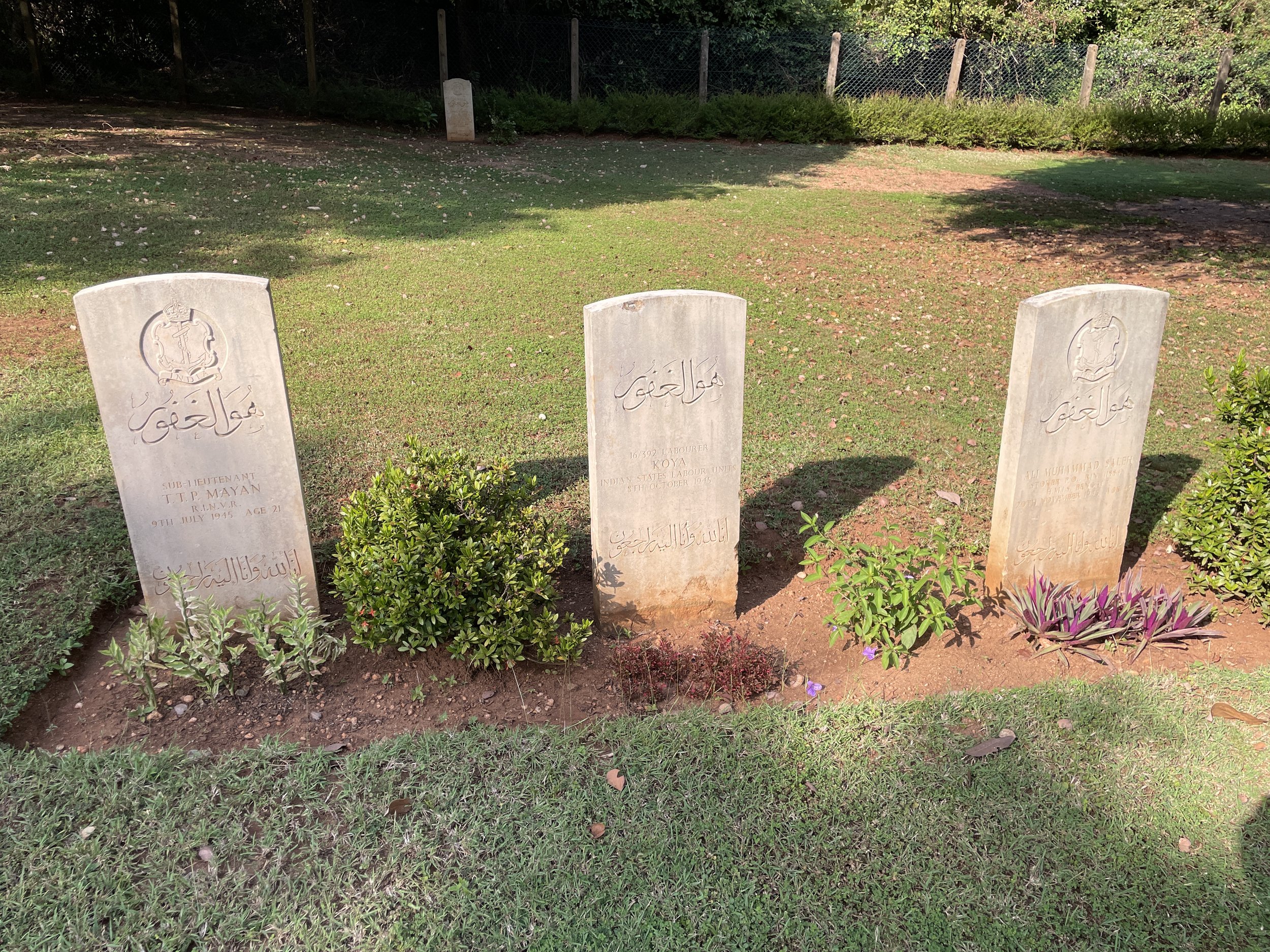CWGC War Cemetery at Trincomalee
This war cemetery is located at Trincomalee in northeastern Sri Lanka. It is jointly run by local authorities and the Commonwealth War Graves Commission (CWGC). During British colonial rule, it was originally the Combined Services Cemetery, where mostly service members who had died on operations in British Ceylon or in the Indian Ocean area during the Second World War were buried. There are also some graves which were relocated from Jaffna in northern Sri Lanka. The cemetery was taken over by the British Admiralty in April 1948 for use as a permanent naval cemetery. Upon the withdrawal of the British forces from Ceylon in October/November 1957, it became the property of the Ceylonese government which have granted the CWGC security of tenure in perpetuity.
The dead buried in this cemetery are from a number of different service branches, mostly from the Royal Navy and the Royal Air Force. There are also some graves of Indian States Labour Unit members as well as some service members from Ceylonese formations and foreign militaries (e.g., from the Netherlands or France).
Like others of its kind, this CWGC cemetery features a number of highly recognisable features that have been duplicated across the former British Empire and on its former battlefields (including the “Cross of Sacrifice”). The headstones are almost exclusively kept in a standardised shape. They feature the insignia of the person‘s military unit, their name and date of death. Sometimes the age of the fallen service member is also engraved on the headstone. Moreover, family members sometimes chose to have certain lines engraved on the headstones.
Trincomalee was home to British military installations long before World War II, serving as a base for a Royal Air Force and a Royal Navy contingent. Trincomalee’s strategic significance for the British Empire rose significantly with the capture of Singapore by Japanese forces on 15 February 1942, as this led to the relocation of the British Eastern Fleet from Singapore to Trincomalee. While the fall of Singapore completed the loss of the whole of British Malaya to the Japanese Empire during World War II, it also made Ceylon into an important provider of rubber for the British war effort for the remainder of the conflict.
Ceylon itself also became the target of Japanese bombing. On Easter Sunday 1942, Japanese forces carried out air raids on Colombo and a few days later also attacked Trincomalee. This sent shockwaves through the whole island, as news from occupied China had previously reached Ceylon that told of massacres the Japanese army had carried out there, notably at Nanjing in December 1937 and January 1938.



